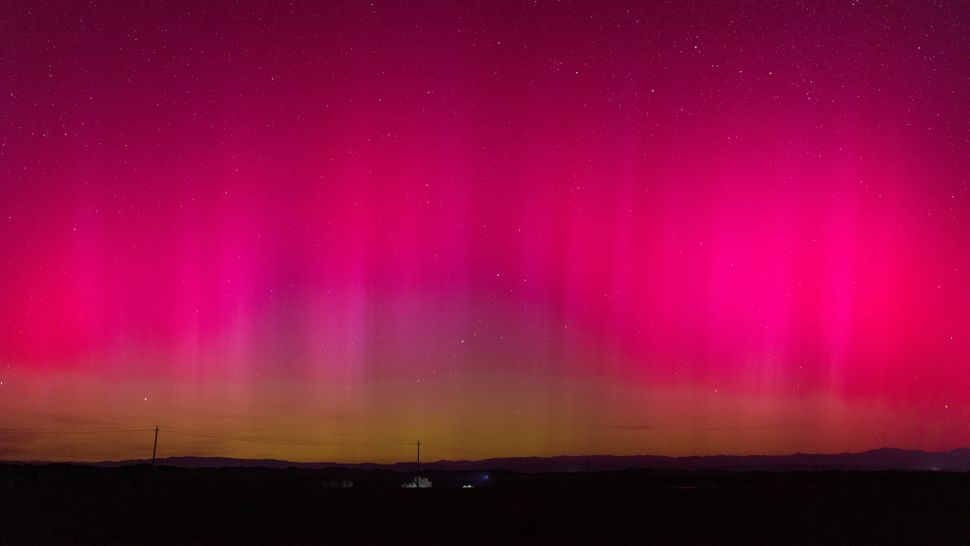Auroras could paint Earth's skies again in early June. Here are the key nights to watch for.
By Jamie Carter published yesterday
The monster sunspot responsible for May's vibrant auroras will soon be facing Earth again. Here's when to be alert for the next display of northern lights on the nights close to June's new moon.

A photo of a bright pinkish-red aurora in China
Vibrant red auroras over China in May, 2024. (Image credit: Getty Images)
If you want to glimpse the northern lights from below the Arctic Circle, be ready to drive to dark skies the first week of June. Earth's most powerful geomagnetic storm in more than two decades happened between May 10 and May 12, painting the skies with colorful auroras as far south as Florida and Mexico in an ultra-rare occurrence.
This was the result of at least five solar storms that hit Earth simultaneously, all originating from a massive sunspot known as active region 3664 (also called AR3664 and AR13664), a dark patch on the sun more than 15 times wider than Earth. The barrage of charged particles collided with Earth's magnetosphere, which funneled them along magnetic field lines toward the poles, generating vibrant auroras along the way.
Crucially, the fallout from the solar storms arrived a few nights after May's new moon, when the night sky was free from moonlight — making even faint auroras easier to see.
Because the sun rotates on its axis once every 27 days, the sunspot disappeared from view around a week later, but it didn't stop producing solar flares. On May 20, it emitted a solar flare rated as X12, the strongest since September 2017. It was observed by the European Space Agency's Solar Orbiter spacecraft.
More:
https://www.livescience.com/space/auroras-could-paint-earths-skies-again-in-early-june-here-are-the-key-nights-to-watch-for
